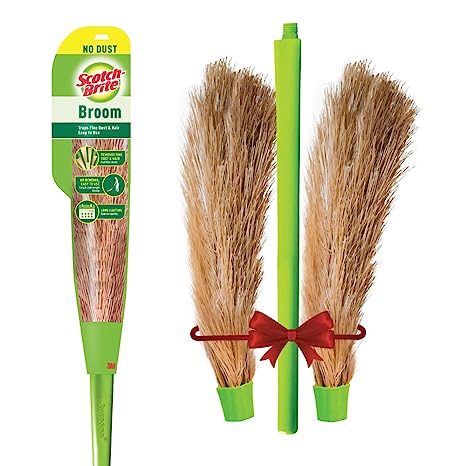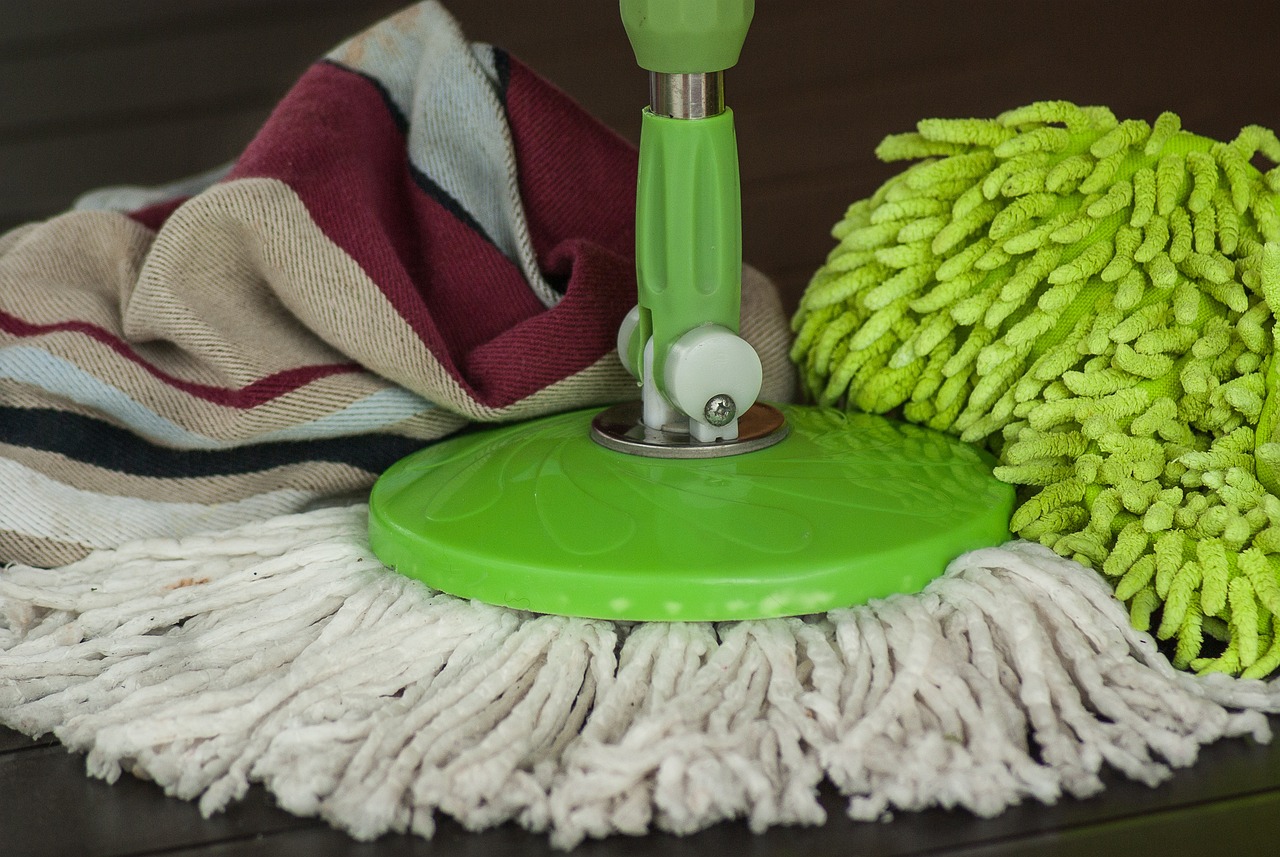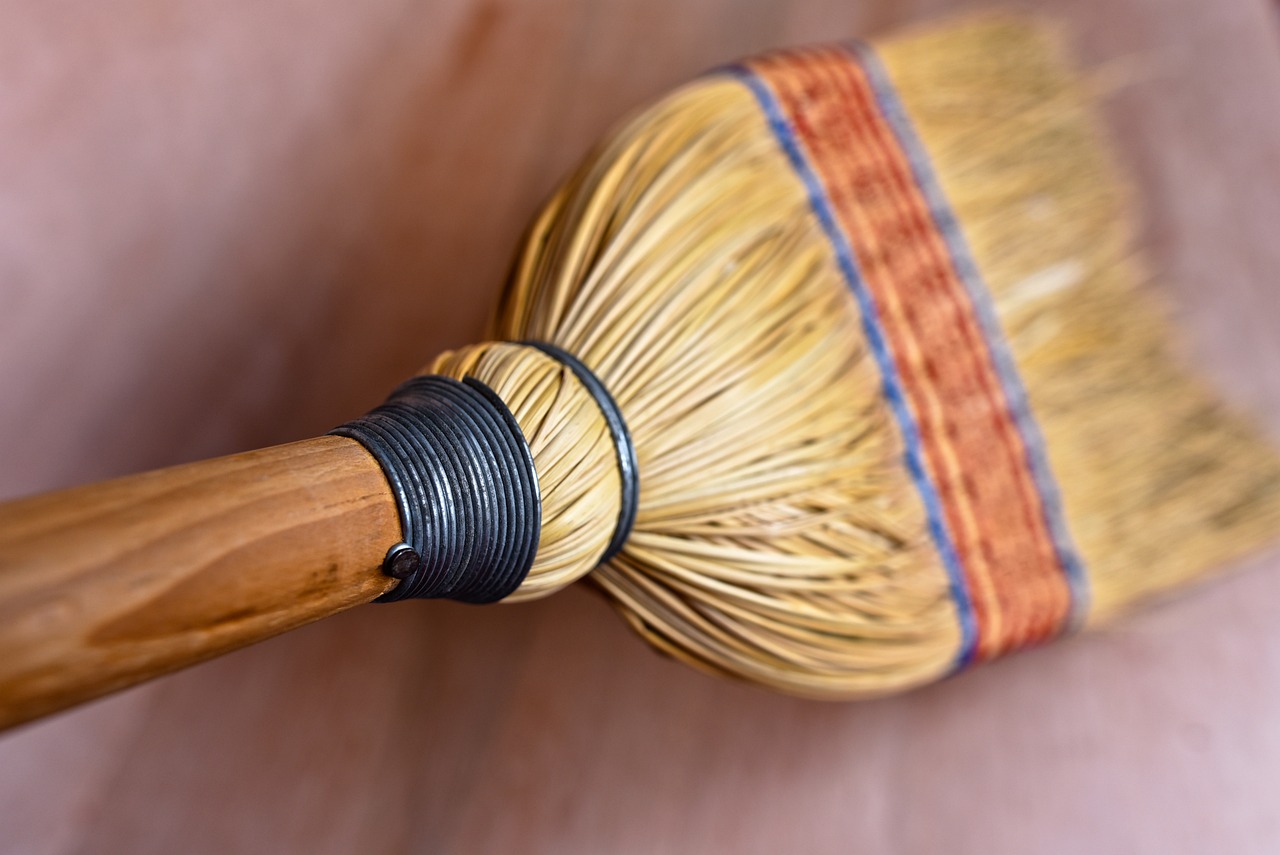The Ultimate Guide to Brooms: A Versatile Cleaning Tool
Last Updated on 5 months ago by Kashif Rahman
The broom, a widely-used cleaning instrument, has been an essential tool for many generations. This thorough guide will delve into everything about brooms, including their definition, varieties, history, uses, maintenance, and much more.
No matter if you are a student, homemaker, property owner, professional cleaner, or simply interested in learning more about this crucial cleaning device, this article aims to offer valuable information and suggestions.
what is a broom?
A broom is a cleaning tool consisting of a handle attached to a brush-like head, known as “jhadoo” in Hindi. Its main purpose is sweeping, which involves removing dirt, dust, and debris from floors and other surfaces.
The brush-like head, often made of bristles or fibers, makes it easier to clean and maintain cleanliness in different environments.
Brooms are available in various shapes and designs, each suited for specific cleaning tasks and surfaces.
You Must Also Read
- Best Water Purifier for Home: Ensuring Clean and Safe Drinking Water
- Supercharge Your Comfort: A Comprehensive Guide to Superfeet Insoles
- Curtain Rods: The Perfect Blend of Functionality and Aesthetics
- Insoles for Shoes: Enhancing Comfort and Support
- Kent Water Purifier: Providing Pure and Healthy Drinking Water
What is a broom used for?
A broom is a cleaning tool primarily used for sweeping floors and other surfaces. It consists of a handle attached to a brush or a collection of bristles made from various materials, such as natural fibers like straw or synthetic materials like nylon.
The main purpose of a broom is to sweep up loose dirt, dust, and other particles from hard surfaces such as concrete, tile, or wooden floors. The bristles gather the debris into a pile for easy collection and disposal.
In summary, brooms are indispensable for maintaining cleanliness in homes, workplaces, and many other settings.
What is the importance of a broom in the house?
The broom is an essential household tool for several reasons:
Cleaning Floors: A broom is primarily used to clean floors. Regular sweeping helps keep the house looking tidy and attractive by removing dust, dirt, pet hair, and other debris from various types of flooring.
Maintaining Hygiene: Sweeping with a broom is a simple yet effective way to maintain cleanliness. It prevents the buildup of dirt and dust, which can attract pests and cause allergic reactions or respiratory problems.
Accident Prevention: Clean, clutter-free floors reduce the risk of slips, trips, and falls. Regular sweeping with a broom enhances safety, especially in high-traffic areas.
Floor Preservation: Routine sweeping helps protect and extend the life of flooring by preventing abrasive particles from scratching or damaging surfaces such as hardwood, laminate, tile, or linoleum.
Efficiency: Using a broom is a quick and effective method for cleaning floors. It is easy to use, requires no electricity, and doesn’t need a complicated setup, making it a practical tool for everyday cleaning.
Cost-Effective Cleaning: Brooms are relatively inexpensive compared to other cleaning tools and can last a long time with proper care, making them a budget-friendly choice for homeowners.
Environmentally Friendly: Brooms are eco-friendly as they don’t require electricity or disposable parts. They offer a sustainable cleaning option that doesn’t contribute to waste production or energy consumption.
Ease of Use: Brooms are easy to handle and suitable for people of all ages. They require no special training or education to use effectively.
The History of Brooms
Brooms have a fascinating history that dates back to ancient civilizations in Egypt and Mesopotamia, where broom-like tools were used for cleaning. These early brooms were typically made from reeds, twigs, or straws bound together to form a brush-like head.
The modern broom began to take shape in the 19th century with the invention of the foot-treadle broom machine. This innovation revolutionized the industry by allowing for faster and more efficient production, making brooms more widely available and affordable.
Types of Brooms
Brooms come in various types, each designed for specific cleaning tasks and surfaces. Here are some common types of brooms:
a) Push Brooms
Push brooms, also known as street brooms, feature wide heads and sturdy bristles. They are ideal for sweeping large areas such as garage floors, patios, and driveways, effectively removing dirt, leaves, and debris.
b) Corn Brooms
Corn brooms, or straw brooms, are traditional tools known for their natural, rustic look. Made by attaching dried corn husks or straw to a wooden or plastic handle, these brooms are suitable for sweeping dry debris on both indoor and outdoor surfaces.
c) Angle Brooms
Angle brooms, sometimes referred to as broomsticks, have angled bristles that allow them to reach into corners and tight spaces. They are particularly useful for cleaning under furniture, along baseboards, and other hard-to-reach areas, offering enhanced maneuverability and effective cleaning.
d) Electric Brooms
Electric brooms represent a modern advancement in cleaning technology. They use suction or powered rotating bristles to collect dirt and debris. Lightweight and portable, electric brooms are convenient for quick cleanups on various surfaces.
e) Push Broom with Dustpan
Push brooms with built-in dustpans offer a practical and space-saving solution. These brooms include an integrated dustpan, allowing you to sweep debris directly into it without needing a separate dustpan, reducing the need for bending and stooping. They are commonly used in both residential and commercial settings.To purchase a broom Click here

Scotch-Brite Combo | No-Dust Broom, Long Handle, Easy Floor Cleaning (Multi-use)
- Material: Plastic Fibre, Color: Green
- Scotch-Brite broom is flexible and reaches corners
- Flat fibre for fine dust removal
- Water-resistant
- Less-Back strain
What is the brand name of the broom?
Various companies produce and market brooms. Several popular broom manufacturers in the USA & India are:-
- Libman
- O-Cedar
- Casabella
- Quickie
- Fuller Brush Company
- Scotch
- Mr Clean
- Bajrang,
- Thunderfit,
- Spot Zero,
- Vimal
Choosing the Right Broom
For optimal cleaning results, selecting the right broom for your needs is crucial. Here are some factors to consider when choosing a broom:
Surface Type: Identify the surface you will be cleaning. Different brooms are designed for specific surfaces such as hardwood floors, carpets, or outdoor areas.
Bristle Material: Bristles come in various materials, including natural fibers, synthetic fibers, or a mix of both. Natural fibers like corn or horsehair are gentle on delicate surfaces, while synthetic fibers provide durability and flexibility.
Bristle Stiffness: Evaluate the stiffness of the bristles. Soft bristles are ideal for fine dust and light debris, whereas stiff bristles are more effective for heavier cleaning tasks.
Handle Length: Choose a broom with a handle length that suits your height to ensure comfort and prevent strain during use.
Durability: Opt for brooms made from high-quality materials that can endure frequent use and have a longer lifespan.
Reviews and Recommendations: Consult reviews or seek advice from reliable sources to learn about the performance and durability of various broom brands and models.

How to Use a Broom Effectively
Using a broom effectively involves more than just sweeping back and forth. Follow these tips to enhance your broom’s performance:
Grip the Broom Properly: Hold the handle firmly with one hand near the top for control and the other hand lower down for better leverage and balance.
Sweep with Short, Overlapping Strokes: Employ short, controlled strokes and overlap each one slightly. This method helps ensure that all debris is collected without leaving any behind.
Angle the Broom: Tilt the broom slightly towards yourself for more efficient debris collection. This angle helps gather dirt more effectively and prevents it from spreading.
Direct Debris Towards a Dustpan or Pile: Sweep debris towards a dustpan or form a pile to simplify collection. This approach minimizes extra work and keeps the area organized.
Maintain the Broom: After each use, clean the broom to remove accumulated dirt and hair. Regular cleaning helps maintain the broom’s effectiveness and extends its lifespan.
Use Proper Posture: To avoid back strain, maintain good posture while sweeping. Bend your knees slightly and use your legs to drive the sweeping motion, rather than relying solely on your back.
5. Maintaining Your Broom
Proper maintenance of your broom is essential to keep it in optimal condition and ensure its longevity. Follow these maintenance tips to get the most out of your broom:
- Clean the Bristles: After each use, remove any debris or hair trapped in the bristles. Tap the broom on the ground or use your hands to loosen and remove the dirt. For stubborn debris, you can use a comb or brush to gently clean the bristles.
- Wash the Bristles: Periodically, wash the bristles with warm soapy water to remove any built-up dirt or residue. Rinse thoroughly and allow the broom to air dry before using it again.
- Store Properly: Hang your broom upside down or store it with the bristles facing up to maintain their shape. This prevents the bristles from bending or becoming misshapen over time.
- Avoid Excessive Moisture: Keep your broom away from excessive moisture or wet areas. Moisture can weaken the bristles or cause mould and mildew growth. Store the broom in a dry location to prevent damage.
- Replace Worn-out Brooms: Over time, broom bristles wear down and become less effective. If you notice significant fraying or stiffness, it’s time to replace your broom with a new one for optimal cleaning results.
Organize Your Cleaning Tools with a Broom Holder
Keeping our homes clean and organized is a never-ending chore, so having the proper equipment is essential. A clever invention created to keep our brooms and other cleaning supplies tidy and convenient to access is a broom holder. We’ll discuss the advantages of a broom holder and how it can transform the way you organize your cleaning products in this post.
Why You Need a Broom-Holder
Are you sick of discovering your brooms stacked in a corner or lying haphazardly against a wall? The ideal answer to this frequent issue is a broom holder. Multiple hooks and slots are provided by this straightforward yet efficient storage solution to hold brooms, mops, dustpans, dusters, and other cleaning supplies.
You may put an end to the hassle of tangled bristles and lost tools by putting a broom holder in your home.
Organized and Space-saving
The rapid organization a broom holder offers is one of its main benefits. You may keep your brooms and other items neatly arranged, maximizing your storage space, by designating specific locations for each cleaning implement.
A broom holder makes it simpler to maintain a clutter-free environment, whether you live in a little apartment or a large home, making it easier to locate the necessary equipment when you need it.
Easy Installation
The majority of broom holders include simple installation options including adhesive backing or wall mounting. It’s simple to set up in your kitchen, laundry room, garage, or any other location where cleaning products are commonly used.
Because it is made of sturdy materials, your broom holder will be able to support the weight of your cleaning supplies and last for many years.
Versatility and Accessibility
A broom holder is a multipurpose storage option because it may contain different cleaning supplies in addition to brooms. These holders are made to make it simple and quick to access your cleaning materials. Your brooms and mops will be available where you need them, saving you from having to dig through cabinets or under the sink.

Common Mistakes to Avoid
To ensure you get the best performance from your broom, avoid these common mistakes:
- Using the Wrong Broom for the Surface: Using a broom designed for indoor use on outdoor surfaces or vice versa can lead to subpar cleaning results and damage to the broom.
- Applying Excessive Pressure: Applying too much pressure while sweeping can cause the bristles to bend or break, reducing their effectiveness. Use light and controlled sweeping motion instead.
- Neglecting Regular Cleaning: Failing to clean the broom regularly allows dirt and debris to accumulate in the bristles, reducing its efficiency. Take the time to clean your broom after each use.
- Storing the Broom Improperly: Storing the broom with the bristles on the ground can cause them to become misshapen and less effective. Hang the broom or store it with the bristles facing up.
- Ignoring Signs of Wear and Tear: Continued use of a worn-out broom with frayed bristles can lead to poor cleaning performance. Replace your broom when it shows signs of significant wear.
- Using a Wet Broom: Using a broom on wet surfaces or with wet bristles can lead to mould and mildew growth, as well as damage to the broom. Ensure that both the broom and surface are dry before sweeping.
Conclusion
In conclusion, brooms are a crucial tool for keeping our homes and workplaces tidy and clean. Your ability to clean more effectively can be greatly increased by being aware of the various varieties of brooms, selecting the one that best suits your needs, and utilizing it properly.
You can extend the life of your broom and assure peak performance by adhering to regular maintenance procedures and avoiding frequent mistakes.
Always choose a broom that is appropriate for the surfaces you will be sweeping and the specific cleaning duties you have. To keep your broom effective, keep it clean, store it appropriately, and replace it as needed.
You can easily remove dirt, dust, and debris with the correct brush and the right techniques, keeping your surroundings tidy and welcoming.
So, embrace the power of the broom and make cleaning a breeze! Like & share the article.
FAQs about Brooms
1. What is a broom made of
Brooms are typically made of various materials, including natural fibres like corn, straw, or horsehair, as well as synthetic fibres like nylon or polypropylene. The handle is commonly made of wood or plastic.
2. Can brooms be used outdoors
Yes, there are brooms specifically designed for outdoor use. These brooms have sturdy bristles that can effectively sweep debris from surfaces like driveways, patios, or sidewalks.
3. How often should I replace my broom
The lifespan of a broom depends on its quality, frequency of use, and the type of cleaning tasks it is used for. On average, a broom should be replaced every 6 to 12 months. However, if you notice significant wear, fraying, or reduced cleaning efficiency, it’s a good indication that it’s time to get a new broom.
4. Can brooms be used on different types of flooring
Yes, brooms can be used on various types of flooring, including hardwood, tile, laminate, and vinyl. However, it’s essential to choose the right broom type and bristle stiffness that is suitable for the specific flooring to avoid scratching or damaging the surface.
5. Can brooms be used to clean walls and ceilings
Brooms are primarily designed for sweeping floors and may not be the most efficient tool for cleaning walls and ceilings. However, brooms with extendable handles and soft bristles can be used to remove cobwebs or dust from high corners and ceiling areas.
6. Are there any eco-friendly broom options available
Yes, there are eco-friendly broom options available on the market. These brooms are made from sustainable materials like natural fibres or recycled plastics. Look for brooms labelled as eco-friendly or made from renewable resources for a more environmentally conscious cleaning option.

I am Kashif Rahman, a dedicated blogger and content creator with a keen interest in technology, mobiles, computers, internet,and the Entertainment.Enjoys sharing insightful and engaging content to keep his readers informed and inspired





Wonderful blog! I found it while surfing around on Yahoo News. Do you have any tips on how to get listed in Yahoo News? I’ve been trying for a while but I never seem to get there! Thank you
Thanks for your recommendations on this blog. 1 thing I would like to say is the fact that purchasing electronic devices items in the Internet is not something new. The fact is, in the past decades alone, the market for online consumer electronics has grown drastically. Today, you could find practically virtually any electronic gizmo and product on the Internet, ranging from cameras in addition to camcorders to computer elements and gaming consoles.
Howdy, would you mind letting me know which web host you’re utilizing? I’ve loaded your blog in 3 completely different web browsers, and I must say this blog loads a lot quicker then most. Can you suggest a good internet hosting provider at a reasonable price?
It抯 really a nice and helpful piece of info. I抦 happy that you shared this useful info with us. Please keep us up to date like this. Thank you for sharing.
I’m experiencing some small security issues with my latest blog, and I’d like to find something safer. Do you have any suggestions?
I’ve bookmarked your site, and I’m adding your RSS feeds to my Google account.
Hello there! This is my first comment here, so I just wanted to give a quick shout out and say I genuinely enjoy reading your articles. Can you recommend any other blogs/websites/forums that deal with the same subjects? Thanks.
You made some decent points there. I regarded on the internet for the difficulty and found most people will go along with with your website.
I抳e learn several good stuff here. Certainly value bookmarking for revisiting. I surprise how so much effort you set to create one of these great informative website.
You’ve the most impressive websites.
Thank you for sharing this article with me. It helped me a lot and I love it.
you’re really a good webmaster. The site loading speed is incredible. It seems that you’re doing any unique trick. Moreover, The contents are masterwork. you have done a excellent job on this topic!
I don’t think the title of your article matches the content lol. Just kidding, mainly because I had some doubts after reading the article.